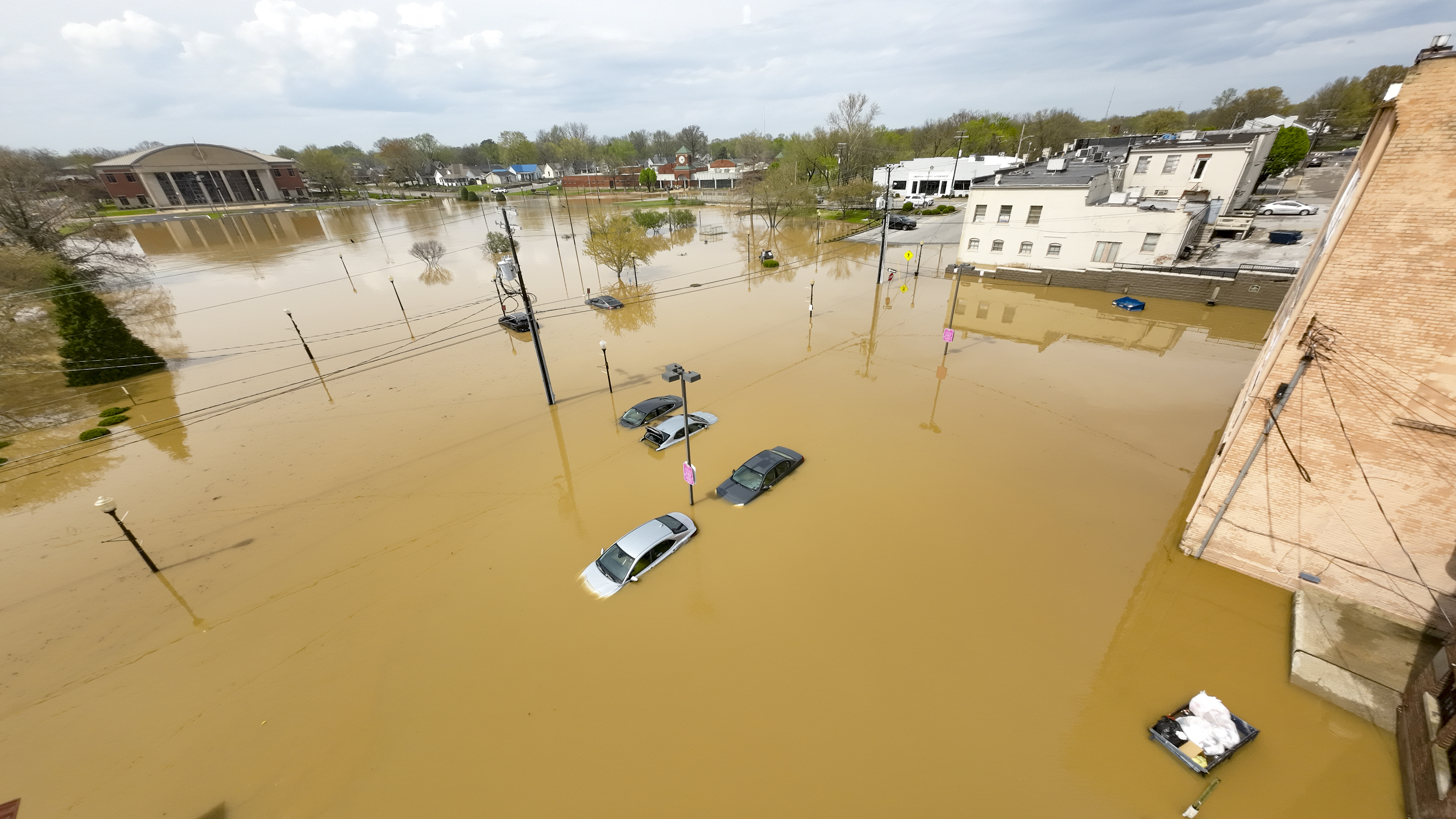
Climate change intensified the catastrophic floods that swept through several U.S. states at the beginning of April, a new report has found.
At least 15 people have died as a result of the flooding, which devastated states like Tennessee, Arkansas and Kentucky between April 2 and 6. The southern Midwest and parts of the southeastern U.S. also experienced multiple rounds of tornadoes at the same time, which killed at least 9 people.
Now, researchers have studied how climate change may have played a role in the historic flooding and extreme weather. They estimated that human-caused climate change increased the likelihood of the flooding by about 40% and increased their intensity by about 9%, according to a report by World Weather Attribution (WWA), which studies how climate change influences extreme weather events.
However, it’s still difficult for scientists to quantify our impact on global weather, and the researchers noted their estimates were conservative due to discrepancies between different climate models. The report also highlighted that an effective emergency response prevented what could have been an even larger catastrophe.
Related: Kids born today are going to grow up in a hellscape, grim climate study finds
The historic flooding came in the wake of extreme rainfall. These rains came when a high-pressure system over the East Coast and southeastern U.S. clashed with a low-pressure system to the west, and the boundary between these two systems stalled, so the rainfall kept hitting the same area. At the same time, the jet stream carried moisture into the region from the eastern Pacific as surface moisture came in from the Gulf of Mexico.
To estimate the degree to which climate change increased the likelihood and intensity of the flooding, the researchers analyzed historical data in the central Mississippi River valley alongside the rainfall data from April. The team found that both regional weather trends and enhanced sea surface temperatures led to more moisture being available when the rains fell, according to the report.
For example, the report highlighted the role of climate change in the increased moisture coming in from the Gulf of Mexico. Sea surface temperatures are increasing with global warming, and the team found that higher temperatures led to higher rates of evaporation in the Gulf of Mexico, which increased the amount of moisture available when the rains fell over the U.S.
Scientists are still teasing out the degree to which human activity has influenced any given extreme weather event, but it’s clear we’re causing the planet to heat up through burning fossil fuels and other activities. When the researchers just looked at overall warming, they concluded that an extreme rainfall event like the one in April is expected to occur every 90 to 240 years, based on current conditions, but it would be much rarer if the climate were 2.3 degrees Fahrenheit (1.3 degrees Celsius) cooler. This amount of warming made the event between two and five times more likely with 13% to 26% more intensity, based on the report estimates.
World leaders signed the Paris Agreement in 2015, which was an international treaty that promised to limit global warming to preferably below 2.7 F (1.5 C) and well below 3.6 F (2 C). Earth is now consistently above that target, with April representing the 21st out of the last 22 months to breach the preferred 2.7 F limit, according to the European Union’s Copernicus Climate Change Service.
The authors of the report warned that we’re heading for 4.7 F (2.6 C) by the end of the current century. Climate models predict that extreme rainfall will become more frequent and intense in certain regions as the world continues to warm.
At those levels of warming, such extreme rainfall events will likely double in frequency and be 7% more intense, according to the report.
Premium IPTV Experience with line4k
Experience the ultimate entertainment with our premium IPTV service. Watch your favorite channels, movies, and sports events in stunning 4K quality. Enjoy seamless streaming with zero buffering and access to over 10,000+ channels worldwide.

















